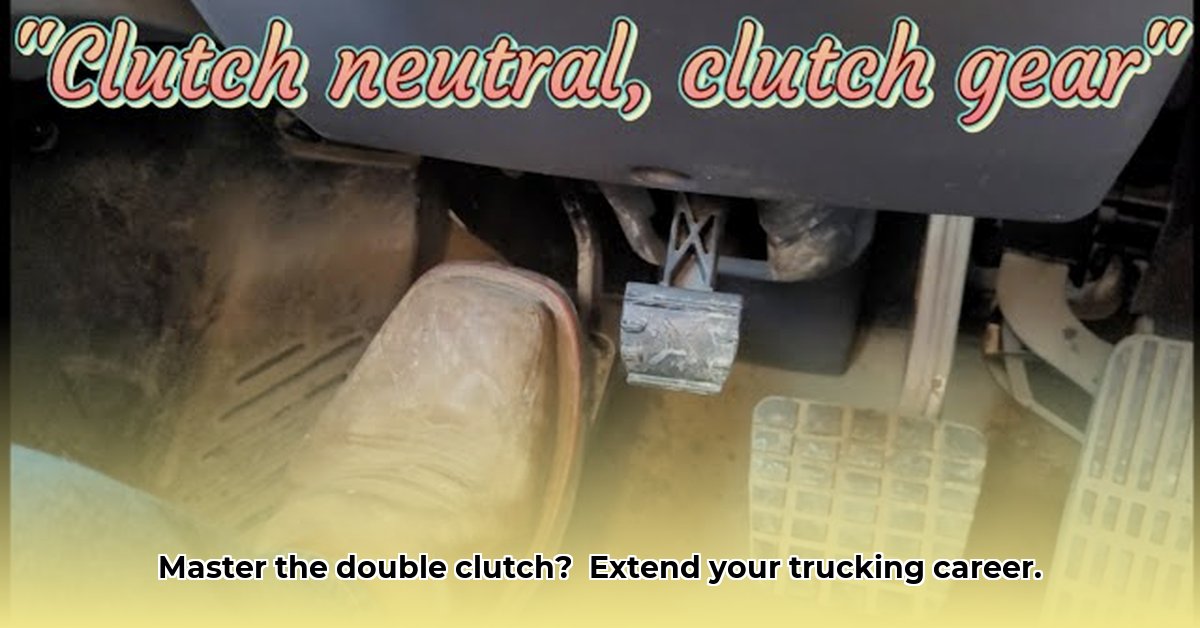
Double Clutching: A Skill for Longevity
Double clutching is a technique that's less common in modern trucking, but still incredibly valuable for extending the life of your transmission and refining your driving skills. While many newer trucks with synchronized transmissions make this skill less critical for everyday driving, mastering double clutching provides a significant advantage in specific situations and demonstrates a high level of driving expertise. It’s a skill that separates the competent from the truly masterful. For a comfortable driving experience, check out truck driver comfort.
Why Bother with Double Clutching? The Benefits
Why spend time learning this seemingly old-fashioned technique? In older trucks or those with non-synchronized transmissions, double clutching prevents the damaging grinding that occurs when shifting gears without matching engine and transmission speeds. This grinding accelerates wear and tear, leading to shorter transmission lifespans and costly repairs. Think of it as the difference between smoothly shifting gears and forcefully jamming them together – one preserves your equipment, the other doesn't. Isn't preventing premature damage worth the effort?
Double clutching ensures smoother transitions by carefully matching your engine's speed to your transmission's output shaft speed. This significantly reduces stress on drivetrain components, extending the life of your truck and saving you money in the long run. Isn't maximizing your rig's lifespan a worthwhile goal?
When Double Clutching Makes a Real Difference
While modern, synchronized transmissions often make double clutching unnecessary in everyday driving, certain situations highlight its benefits. For instance, navigating steep downhill grades with a heavy load demands precision. Double clutching provides the finesse needed for smooth, controlled downshifts, preventing harsh jarring that damages your transmission. It allows you to maintain better control, reducing the workload on your brakes. Wouldn't you want that extra layer of safety and control, especially on challenging descents?
Mastering the Double Clutch: A Step-by-Step Guide
Here's how to master this essential skill. Remember, practice is paramount – the smoother your movements, the better the results. Focus on gentle, precise actions to avoid damage to your transmission.
Fully depress the clutch pedal: This completely disengages the engine from the transmission.
Shift into neutral: This crucial step allows the engine and transmission speeds to begin to synchronize.
Slowly release the clutch pedal: As you release, the engine speed will increase slightly. This is the engine catching up to the transmission’s output shaft speed. This requires a delicate touch and practice to master.
Press the clutch pedal again: This resets the process, preparing for the next gear.
Select your desired gear: Choose the appropriate gear based on your speed and the incline.
Slowly release the clutch pedal while gently increasing throttle: This final step smoothly re-engages the engine and transmission. Coordinate the clutch release and throttle input for a seamless transition – avoiding jarring or grinding. A smooth shift is the ultimate goal, and practice will help you achieve that.
Potential Downsides and Mitigation Strategies
While double clutching offers significant advantages, it’s important to acknowledge potential drawbacks:
| Potential Drawback | Explanation | Mitigation Strategies |
|---|---|---|
| Slightly Longer Shifting Time | Requires additional steps compared to single clutching, potentially increasing shifting time marginally. | Practice to automate the process. Focus its use on situations where precision and control are paramount. |
| Potential for Driver Fatigue | Repeated double clutching, especially in demanding conditions, can increase driver fatigue. | Employ the technique selectively, focusing its use only in appropriate situations that require its benefits. |
| Less Relevant for Some Trucks | Modern synchronized transmissions minimize the need for double clutching in most driving situations. | Understand your specific truck and driving circumstances. Knowing when it's both helpful and necessary is vital. |
Beyond the Steps: Developing Feel and Skill
Double clutching isn't simply a series of steps; it's about developing a feel for the interaction between the clutch, throttle, and gear selection. A perfectly executed double clutch results in a smooth, almost effortless transition. This mastery isn't just about technique; it reflects your professionalism and dedication to maintaining your equipment. It signifies a commitment to minimizing wear and tear, optimizing fuel efficiency, and ensuring the longevity of your truck.
Remember, safety is paramount. Practice carefully, prioritizing safe operation over speed or efficiency. Mastering double clutching takes time and dedication. However, the rewards – smooth operation, extended transmission lifespan, and enhanced driving control – are well worth the investment.